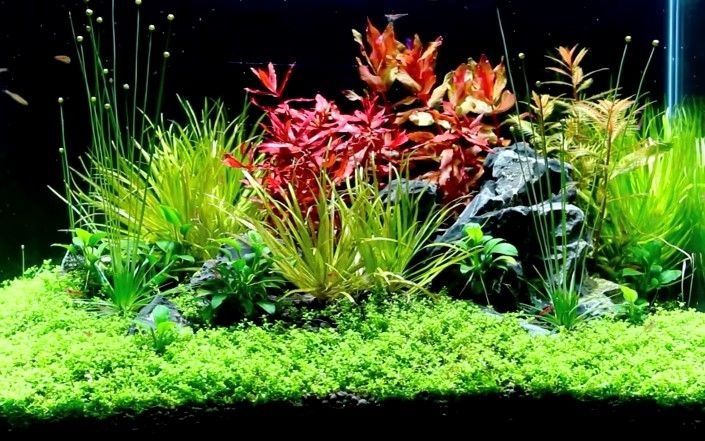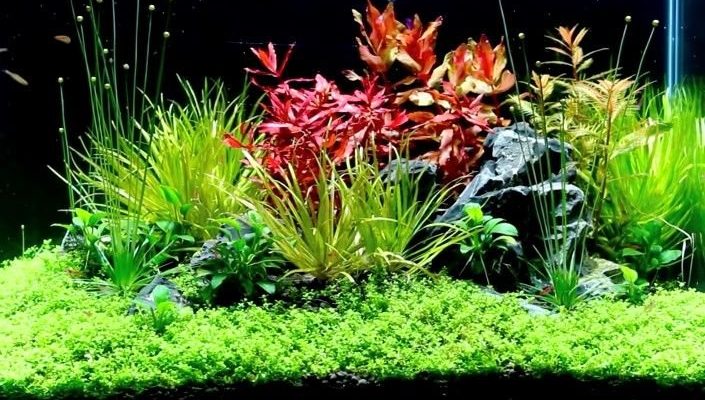
Barbs are lively little swimmers that enjoy a bit of greenery and structure in their environment. They thrive in tanks that mimic their natural habitat. So, if you’re wondering how to make your barbs feel right at home, you’re in for a treat! I’ll walk you through the best plants and substrates for your tank, leading to a vibrant community for both you and your aquatic friends.
Understanding Barbs and Their Needs
Before we dive into the plants and substrate, let’s take a moment to understand the barbs themselves. Barbs are social fish that typically do well in groups. They prefer a bit of movement, so they need a tank that has both swimming space and hiding spots. This is where plants and substrate come into play!
Water Conditions: Barbs generally like slightly acidic to neutral water with a temperature range of 75-82°F (24-28°C). Having live plants not only helps improve water conditions but also provides a place for these active fish to explore.
Swim Space: Think of your tank as a stage where the barbs are the performers. They need plenty of space to swim around. While plants are great for decor, they should be arranged in a way that allows your barbs plenty of room to roam without feeling crowded.
Top Plants for Barbs Tanks
Let’s get to the fun part: the plants! Here are some of the best choices that barbs love. Each plant brings something unique to the table—literally!
- Anubias: This hardy plant is perfect for beginners. Anubias can thrive in low to bright light and can be attached to rocks or driftwood. The tough leaves can handle the occasional nibble from curious barbs.
- Java Fern: Another great option is the Java Fern. It’s easy to maintain and doesn’t require special substrate. Simply tie it to a rock or wood, and let it grow! Barbs love to swim through the lush leaves.
- Amazon Sword: If you want to add some height to your tank, the Amazon Sword is a fantastic choice. It can grow tall and provides excellent cover for your fish. Just make sure to give it enough space since it can spread out a bit.
- Hornwort: This floating plant is a favorite among barbs. It not only adds greenery but also helps keep the water clean by absorbing nutrients. Plus, barbs like to dart in and out of the branching structure!
These plants will not only make your tank look beautiful, but they’ll also create a healthy environment that barbs thrive in.
Choosing the Right Substrate for Your Tank
Now that we’ve covered the plants, let’s talk about the substrate. The substrate is the foundation of your tank, and it plays a vital role in both the aesthetics and health of your aquarium.
Types of Substrate: There are several types of substrates to consider. Here are a few that work well for barbs:
- Gravel: This is a popular choice for many aquarists. Gravel comes in various colors and sizes, allowing you to customize your tank’s look. It’s easy to clean and maintain while providing good drainage for plant roots.
- Sand: If you want a more natural look, sand is a fantastic option. It’s gentle on fish and provides a soft surface for plants to root. Just be cautious with sand type; finer grains can compact, leading to issues with plant growth.
- Plant-Specific Substrate: If you’re focusing on live plants, consider a substrate designed specifically for planted tanks. These substrates often contain nutrients that help your plants thrive. They’re a bit pricier but can lead to healthier, more vibrant growth.
The right substrate can make a huge difference in how your tank looks and functions, so choose one that suits your aesthetic and plant needs.
Setting Up Your Tank
Setting up your barbs tank can feel like a puzzle, but it’s pretty straightforward! Here’s how to do it right:
1. Layering Substrate: Start with a good layer of substrate about 1 to 2 inches deep. If you’re using plant-specific substrate, you can consider a deeper layer for better plant growth.
2. Adding Plants: Once the substrate is in place, start planting your greenery. You might want to use taller plants at the back of the tank and shorter ones in the front to create depth.
3. Decor and Hides: After your plants are set, think about adding rocks or driftwood. Barbs love to explore and hide, which helps reduce stress.
4. Filling the Tank: Slowly fill your tank with water to avoid disturbing the substrate and plants. Once your tank is full, let it cycle before adding your barbs to ensure a stable environment.
Maintaining Your Aquarium
Once your tank is set up and your barbs are swimming happily, maintenance is key to keeping it all thriving. Regular upkeep will keep your plants healthy and your fish happy.
Water Changes: Aim for 25% water changes every week. This keeps water conditions stable and removes any buildup of waste.
Pruning Plants: Keep an eye on your plants. Regularly pruning them will encourage growth and prevent overcrowding, giving your barbs plenty of room to swim freely.
Feeding: A balanced diet is essential for your barbs. Make sure to provide high-quality flakes or pellets alongside the occasional treat, like bloodworms or brine shrimp.
Common Mistakes to Avoid
Setting up a barbs tank is exciting, but it’s easy to make a few common mistakes. Here are some pitfalls to watch for:
- Overcrowding: It might be tempting to pack your tank with too many plants or fish, but overcrowding can lead to stress and disease. Give your barbs space to swim!
- Ignoring Water Parameters: Always check your water’s pH and temperature regularly. This helps maintain a stable environment for your fish.
- Neglecting Maintenance: Some new fishkeepers might let maintenance slide, but regular upkeep is critical to a healthy aquarium. Don’t skip water changes!
By steering clear of these mistakes, you’ll set the stage for a beautiful and healthy barbs tank.
Final Thoughts
Creating the ideal environment for your barbs can be a rewarding journey. With the right plants and substrate, you’re not just setting up a tank; you’re crafting a lively ecosystem. Remember, barbs enjoy a lively and vibrant place to swim, feed, and feel safe. As you choose your plants and substrate, think about what will make them happy and thrive.
So grab a cup of coffee, put on your favorite playlist, and start building the underwater paradise your barbs deserve! You might find that the joy of keeping fish comes from watching them flourish in a space you’ve lovingly created. Enjoy the adventure!

